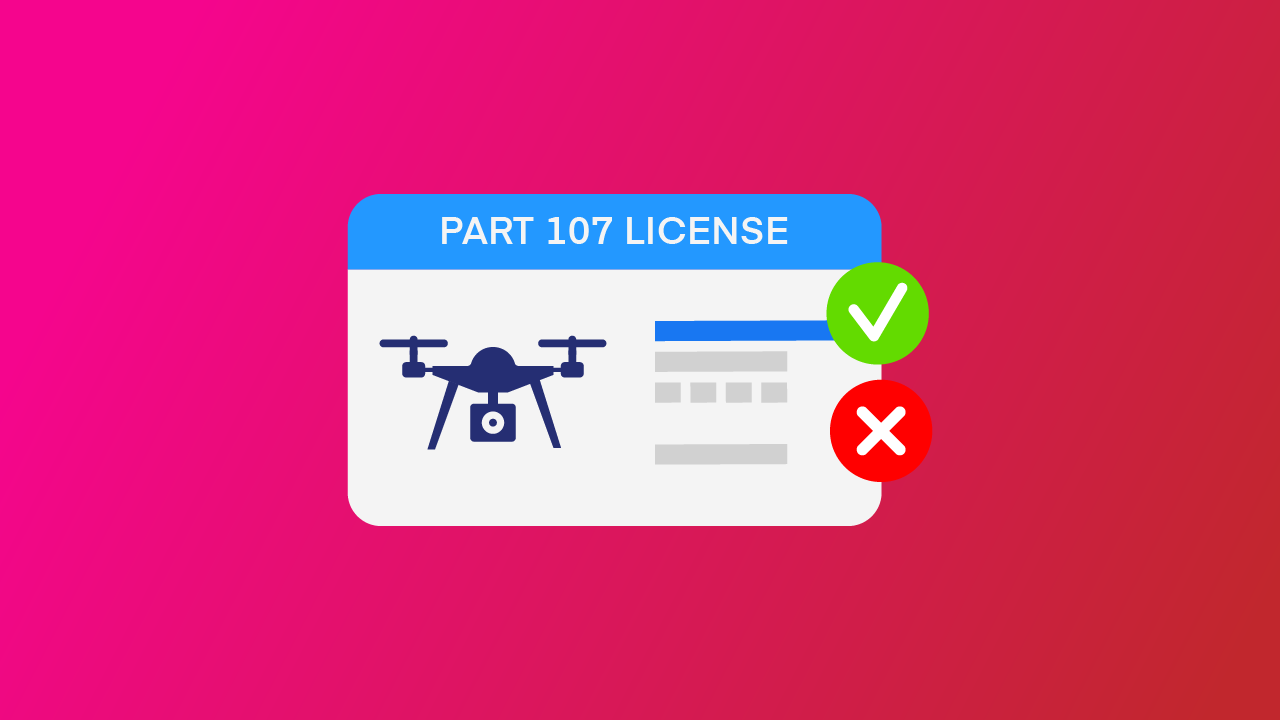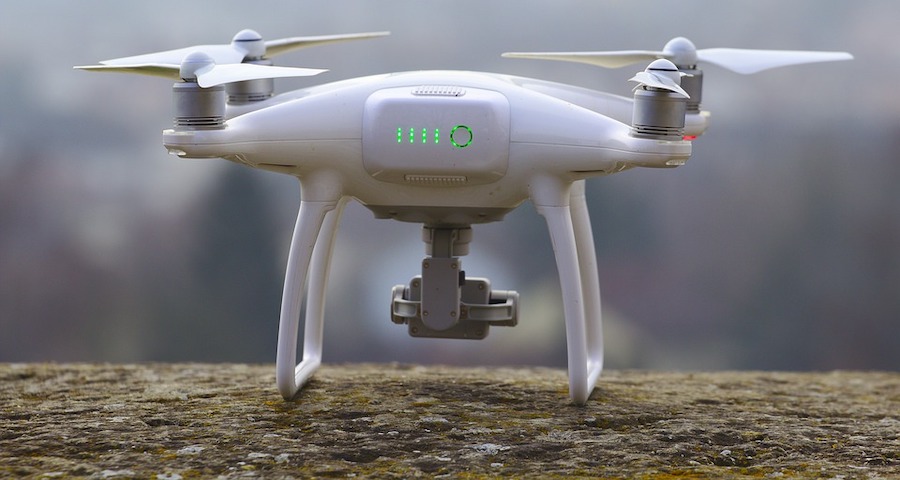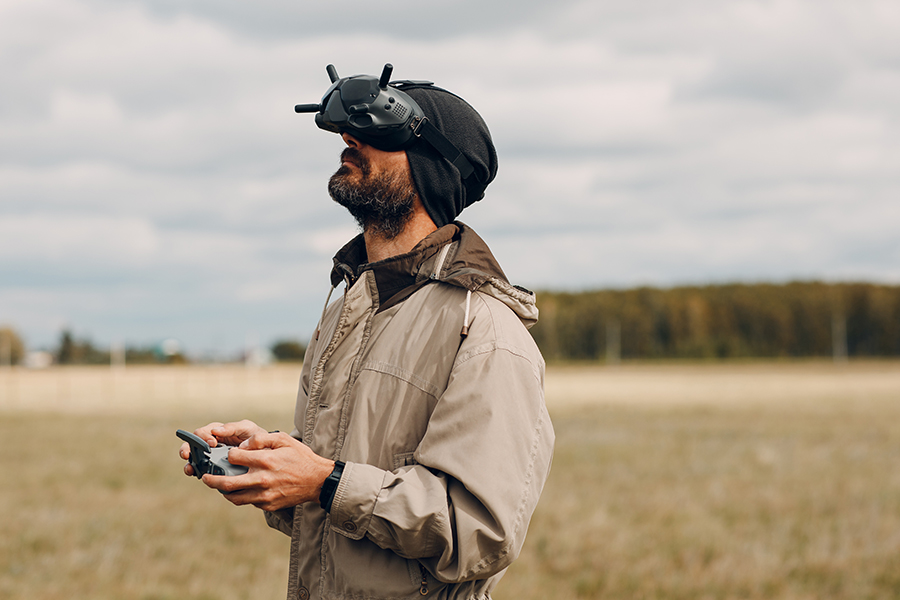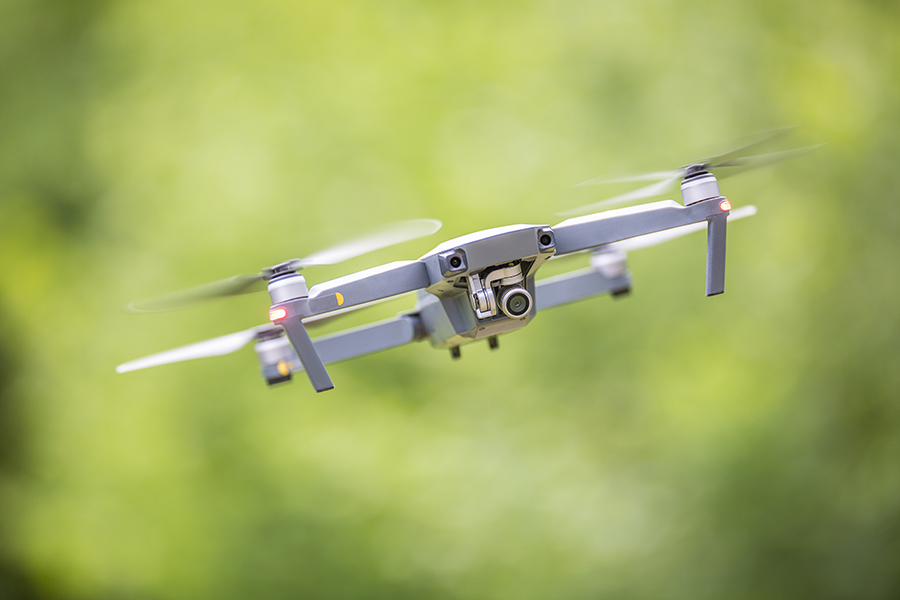-
Key Takeaways
-
What Is a Part 107 License and Who Needs It?
- What Is a Commercial Drone Flight?
- Other Rules Apply
-
Legal Consequences for Unlicensed Drone Flying
-
Risks of Flying in No-Fly Zones and Restricted Airspace
- Examples of FAA Penalties
-
How the FAA Monitors and Enforces Drone Regulations
- Airspace Monitoring
- Public Reporting
- Remote ID
-
Safety and Responsibility in Drone Operation
- Online Part 107 Resources
-
Conclusion
When drones first became available, there weren’t really any rules. As such, some people didn’t understand that they were actually flying an aircraft in the National Airspace. And some of those folks flew recklessly. Not necessarily on purpose, but reckless still the same.
The rapid rise in the popularity of drones caught the FAA unaware, so Congress tasked them with developing a set of rules.
In 2012, Congress gave the FAA a September 2015 deadline “to develop a plan to accelerate safely the integration… of civil unmanned aircraft systems… into the national airspace system.” And they almost made that deadline.
In August of 2016, the FAA finally launched §14 CFR Part 107. While sometimes erroneously called the “Commercial” drone rules, these are actually the default set of rules a person must follow when they want to take off with their drones.
There is §49 USC 44809, the Recreational Exception. Those are for folks wanting to just fly their drones “strictly for recreational purposes”. You can read more about flying recreationally here (need a link to a PI 44809 article).
Key Takeaways
- You can get into trouble with the FAA for flying non-recreationally without a Part 107 Certificate.
- FAA penalties also apply for other violations like flying a drone recklessly or carelessly.
- The FAA now enforces Remote ID, an “electronic license plate in the sky” for drones.
- A Part 107 training course teaches proper operations and helps you avoid fines or accidents.
What Is a Part 107 License and Who Needs It?
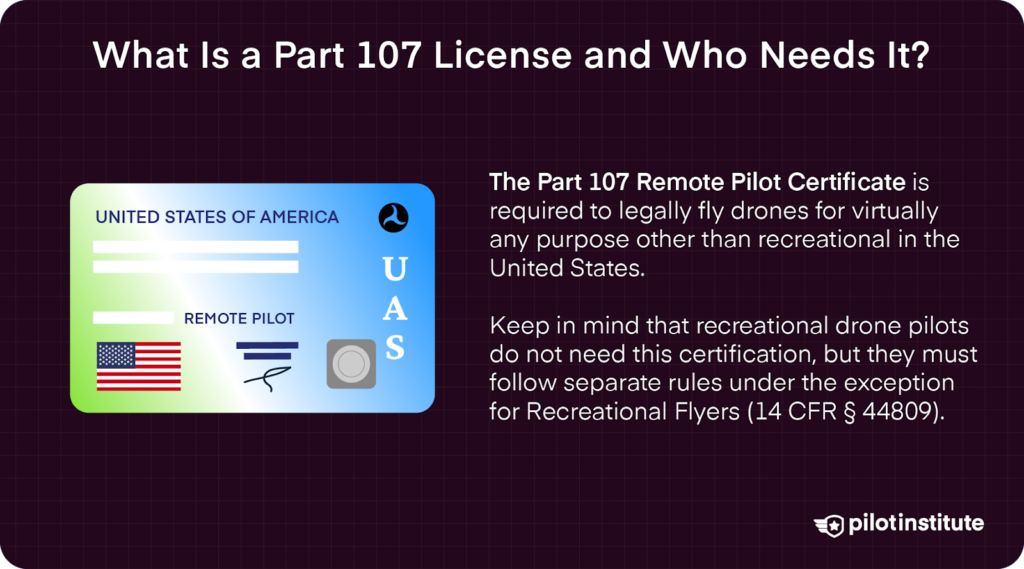
The Part 107 Remote Pilot Certificate is required to legally fly drones for virtually any purpose other than recreational in the United States.
Keep in mind that recreational drone pilots do not need this certification, but they must follow separate rules under the exception for Recreational Flyers (14 CFR § 44809).
We also have regulations such as Part 135, Part 137, and Public COAs, but those are a bit too specialized for this discussion.
What Is a Commercial Drone Flight?
Even though Part 107 isn’t a “commercial license,” it’s worth talking about what is, and just as important, what isn’t a commercial flight. Because any “commercial” flight requires the person flying it to have their Part 107 Remote Pilot Certificate.
What exactly does it mean to fly drones commercially? Many people incorrectly assume that getting paid to fly a drone is the only thing that makes it a commercial flight. This is simply not true. That simply means you can’t fly under §44809, the Relational Exception.
Money does not need to change hands to be “commercial.” Something as simple as flying your own home to sell it or working for your church to provide imagery is considered “commercial”—or, more accurately, “non-recreational.”
It may be easier to specify what is not considered commercial (non-recreational) drone flight. The FAA states that exceptions only apply to flights “flown strictly for recreational purposes,” *§49USC 44809 (a)(1).
Simply put, this means flying drones just for fun. Examples include taking pictures for yourself, exploring the area around you for personal enjoyment, and even posting photos or videos of your hobby for others to enjoy.
And no, simply posting to any social media account does automatically make any flight “non-recreational”. If your intent is to increase views on a monetized channel, then you should have your Part 107 Certificate.
If it’s just to share your passion with like-minded folks, then you’re fine. In that case, only §44809 rules would apply.
Other Rules Apply
Does this mean that it’s okay to fly your drone anywhere as long as you comply with the Part 107 rules? Not necessarily. Although the FAA has Congressionally mandated sole authority to control the National Airspace, there are some perfectly acceptable local laws you need to watch out for.
These can be rules about where you can fly from, land use and zoning, harassment, and even hunting. So pay attention to local rules when you fly. They are just as important as the ones the FAA enforces.
Legal Consequences for Unlicensed Drone Flying
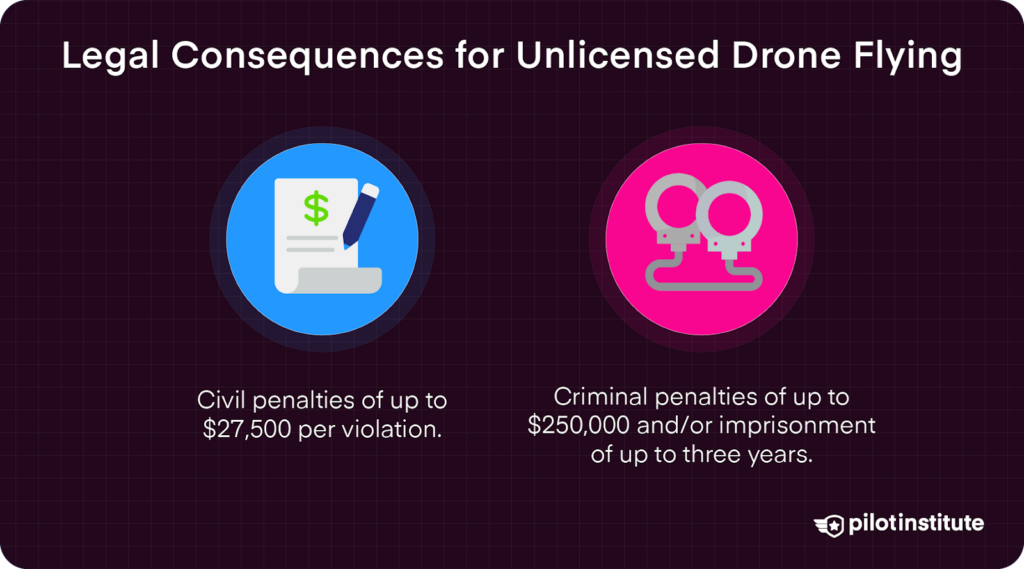
When required, the FAA is pretty clear on the rules of flying a drone under Part 107 Certification. If those rules are broken, they could impose fines or penalties. And even forbid you from ever flying a drone again.
The FAA can enforce these restrictions as part of its jurisdiction on all aviation matters, including drones.
The most common violations include flying in controlled airspace without permission or using drones recklessly. Reckless can mean flying beyond the visible line of sight and even over people without proper authority.
Does the FAA actually enforce these penalties? As we’ve seen recently, the FAA certainly puts enforcement at the top of its list. The FAA has published information about penalties it has given to drone operators.
A well-known example is Michael DiCiurcio, aka YouTuber PhillyDroneLife. Mr. DiCiurcio was repeatedly caught flying recklessly and without a Part 107 Certificate. After his continued flights, the FAA proposed fines of $182,000 against him. In February 2024, Mr. DiCiurcia pleaded guilty to these charges.
While he did not have to pay the fine, he lost all of his drones, removed his YouTube channel, and agreed to “never operate in any manner any sUAS of any type, size, model, of any kind within the United States.”
All because he repeatedly and consciously ignored FAA regulations. Even after the FAA asked him to quit flying like that.
The hefty fines, the chance of losing your drone, and possibly being banned from flying again show how seriously the FAA takes Part 107 rules. The FAA takes airspace safety very seriously. Enforcing regulations on drone operations is simply part of their job.
Risks of Flying in No-Fly Zones and Restricted Airspace
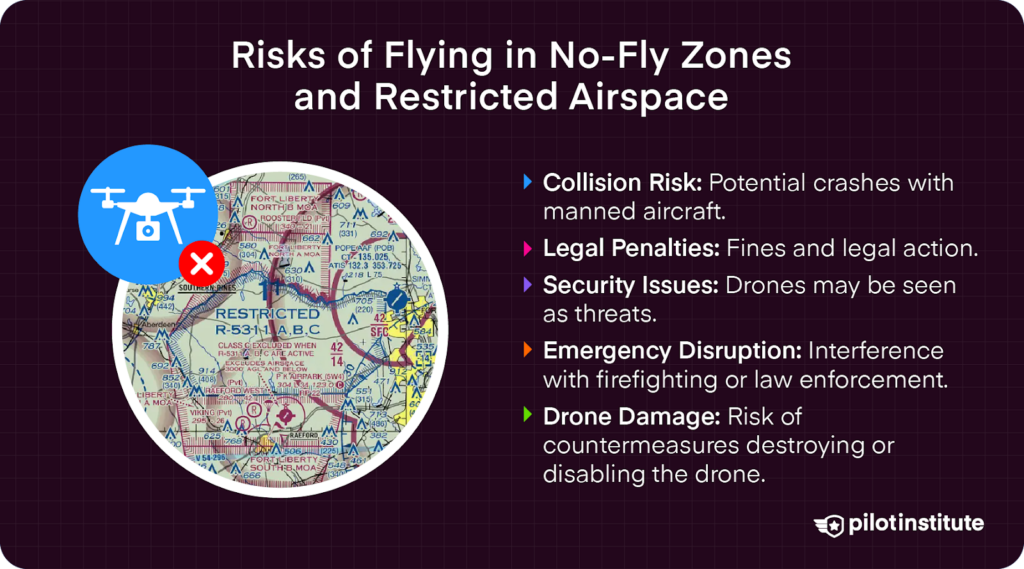
The concept of no-fly zones and restricted airspace is rather simple. These refer to areas where any sort of drone operation is prohibited. That is, unless you have been able to secure prior authorization. Such restrictions are usually in the interest of public safety and national security.
Airports, prison facilities, and military bases are some common examples of no-fly zones. Stadiums or arenas where many people gather can also have temporary no-fly zones.
These happen usually during concerts or sports events. These are known as temporary flight restrictions (TFR). You can find most of those on the FAA’s TFR site: https://tfr.faa.gov/tfr2/list.html.
Examples of FAA Penalties
The FAA has fined drone operators for flying drones without permission in restricted airspace or no-fly zones several times. Most notable are these three examples:
- A person who operated an unregistered drone during the Miami Grand Prix in Florida on May 7, 2022, was fined $18,200.
Other violations included not keeping the drone in sight. The pilot was also flying without a Part 107 certificate.
- A person was fined $7,760 for operating an unregistered drone. This was during an NFL game back in January 2022 at the Paul Brown Stadium in Cincinnati.
Again, the operator was flying without a Part 107 certificate. The operator was also using FPV, effectively losing visual line of sight. - Two people were fined $16,000 and $4,000 for operating drones near the SoFi Stadium in California.
This happened while a TFR was in place for the Super Bowl in February 2022. The airspace was also classified as national defense airspace and thus was a no-fly zone. - And just recently, Peter Tripp Akemann of Culver City, CA pleaded guilty to hitting a Super Scooper fire fighting aircraft with his drone.
Mr. Akemann has to pay for the repairs of the Super Scooper (estimated to be over $65,000), and to complete 150 hours of community service in support of the 2025 Southern California wildfire relief effort.
Mr. Akemann flew over 1.5 miles away from his drone, and flew in a Firefighting TFR. - Another incident happened in 2021 when a drone flew close to a helicopter. The helicopter was being operated by law enforcement in Pasco County in Florida.
This drone operator was fined $32,700 for this violation. There were also additional fines for other violations. These included flying at night without the required lights and going higher than the 400-foot limit.
These fines and penalties are not as important as the risk of reckless drone flight. Flying a drone without following the rules can lead to accidents.
The FAA is very serious about the safety of the National Airspace. As drone owners, we should be so as well.
How the FAA Monitors and Enforces Drone Regulations
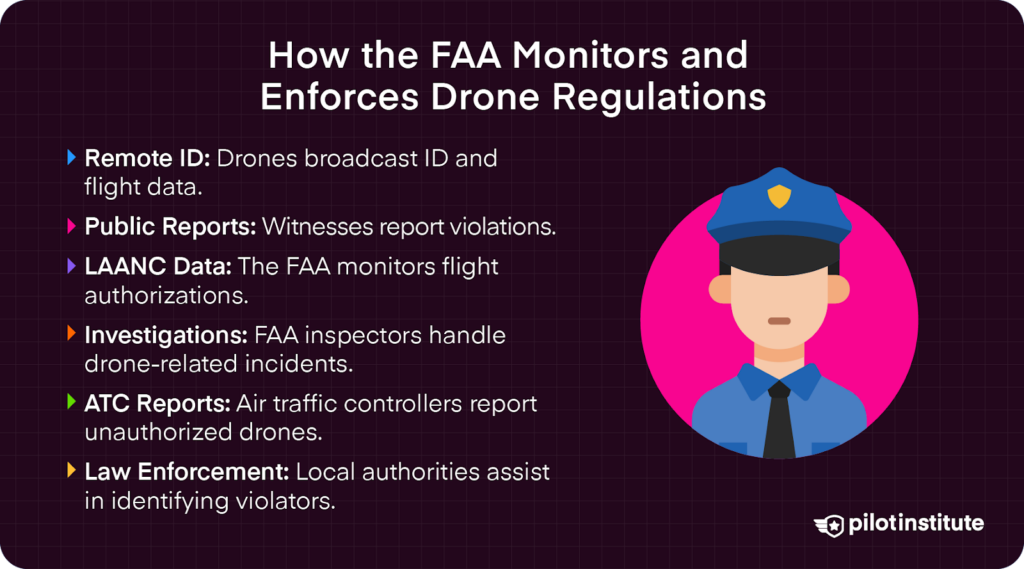
Have you ever wondered how the FAA can identify drones and catch Part 107 violations?
This is a bit easier and more systematic now because of Remote ID. Before Remote ID, however, the FAA relied on more traditional airspace monitoring techniques.
Airspace Monitoring
One thing to remember is that most drones come with serial numbers. These allow drones to be easily traced to their owners or operators.
If a drone crashes or is caught doing illegal operations, the operator can be found. This has been the case for many of the unauthorized drone operations that the FAA has penalized.
Many times, a system is set up to watch air traffic near important places. These include airports, government buildings, large events, and even many cities across the country.
This helps these facilities easily identify unauthorized drone flights. It’s best just to assume that when you’re flying your drone, someone else also knows you’re there.
Public Reporting
Without such technologies, the FAA also relies on good old-fashioned public reporting. A drone flying over a crowd or near emergency operations will get a lot of attention.
In such cases, there is a good chance someone in charge can find the errant drone operator. As mentioned above, it’s not that difficult.
Remote ID
Remote ID (RID) has completely changed how drones are identified. It is also a new system that makes operators more accountable. With this technology, drones regularly send out packets of information.
These can then be used to identify the drone’s location and the person controlling it. All this can be done with one of the many smartphone apps designated to do that very thing. Anyone can put them on their smartphone, even your neighbors and law enforcement.
More importantly, the information packet contains the drone’s serial number, which law enforcement can easily trace back to its operator.
With RID, it’s much easier for the FAA or local police to catch drone operators flying against the rules. The goal is to make drone flight safer for everyone, including the general public.
However, no personal information is included in the packet that is collected by RID apps.
Safety and Responsibility in Drone Operation
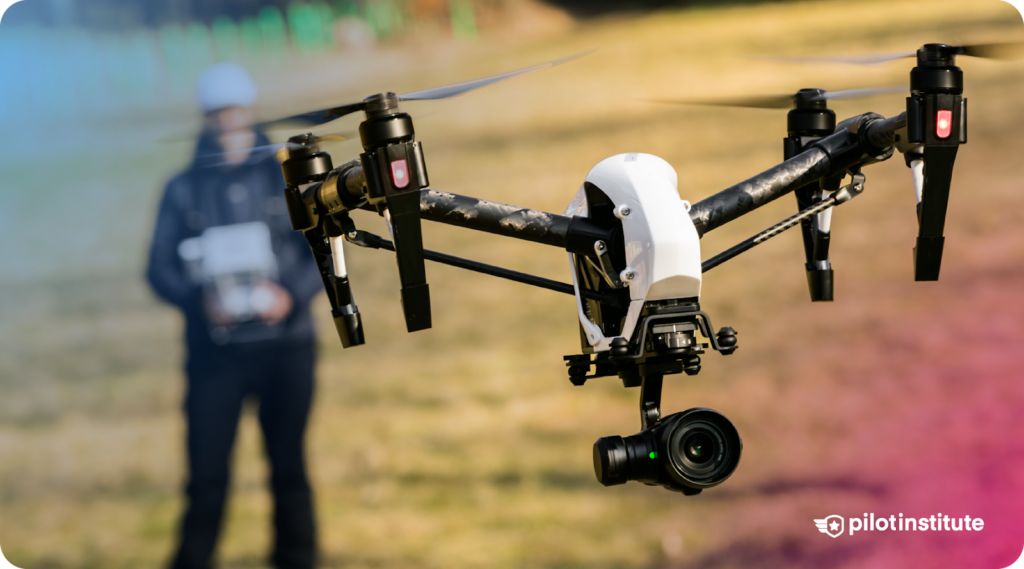
The rules for flying drones have changed a lot in the last ten years. This started with the Part 107 rules. Some of these rules have been updated about when, where, and how you can fly a drone.
With the increase in drones in the air, the FAA has been able to start the process of gathering historical evidence of just how safe our drones are.
The documentable safety of drone flights has allowed the FAA to relax some rules. Rules such as flying at night, flying over people, and even the upcoming expected relaxation of flying beyond line of sight.
The FAA rules for flying drones are focused on keeping our national airspace safe. The goal is to make sure drones don’t harm people, or property. Drones are now more popular than ever.
This also means that there are more of them flying around in national airspace. As such, it remains our responsibility to continue to fly our drones safely, and encourage others to do the same.
Online Part 107 Resources
Penalties are just means to enforce these rules. By default, flying safely should be the responsibility of every single drone operator. And being a responsible drone pilot starts with knowledge of the rules. If you need help in that department, Pilot Institute offers a wide range of useful online courses:
- Our top-rated Part 107 Made Easy course gives a clear summary of the Part 107 rules. This will help you earn your Remote Pilot Certificate and get a good start in safe drone flying.
- For more experienced Part 107 pilots, we recommend our Part 107 Waivers Made Easy course. This course helps you write better Part 107 waiver requests. Waivers let you fly drones in ways that are usually not allowed by the Part 107 rules. This gives you more chances to use drones for business.
- For the real newbies, we recommend the Drone Flying 101 course. This course tells you everything you know to get started with drone flight. It covers a few basic flight maneuvers and gives a brief rundown of when and where you can legally fly your drone.
Conclusion
Rules may feel tedious and silly at times, but they are there for a reason. In the case of drone operations, the FAA has been enforcing Part 107 rules with fairly good results.
The Part 107 Certificate has helped make drone pilots better certified and more knowledgeable. Knowing the best ways to fly drones safely has helped prevent major drone accidents.
Reckless drone flight gives people a bad impression of the drone industry. This hurts the reputation of drones, and could even lead to stricter rules.
Keeping drone flights safe is the shared responsibility of every drone pilot. What can you do to be a part of this movement? The most important thing you can do is learn about safe drone flying and get your Part 107.
